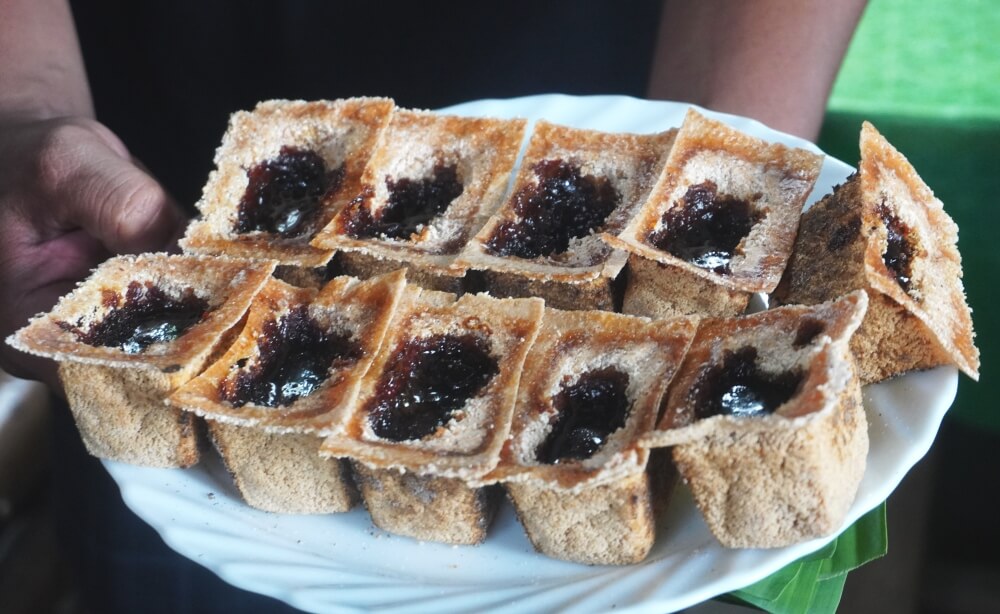
SAPARUA ISLAND, INDONESIA – A short caravan of funky minibuses hauled our group on a bumpy ride through the jungle. We were headed from our beachside landing to our morning destination in a rural island village.
The road had been paved with concrete sometime in the last century and was sorely in need of resurfacing. But the bouncy ride was all just part of the adventure.
We had come to watch our hostess, Oma Nelly (oma means grandma in the local language), demonstrate how she makes traditional sago cakes. Our guide, Leo, explained each step of the process.
Oma Nelly had done this before
Grandma Nelly has been making sago cakes for more than 50 years, having started when she was just 12 years old.
Our group of around a dozen-and-a-half crowded into a rustic building directly behind the main house, itself a modest one-story building with a rusty tin roof.
The house was just a short walk from the roadway past palm trees, a bamboo grove and piles of discarded coconut husks.
Members of the boat crew who accompanied us waited outside, peering in through an open window.
A woodfire burned on a raised hearth at one side of the small space. The building’s rough-sawn wooden siding left plenty of gaps to allow airflow to carry the wood smoke up and out of the space.
Soot-stained clay molds were stacked above the flames
Just above the low flames, several soot-stained rectangular clay molds were stacked atop two lengths of heavy steel rebar. Each mold was about the size of a brick with five indented cells. Our guide explained that the molds were made of local clay by another village member.
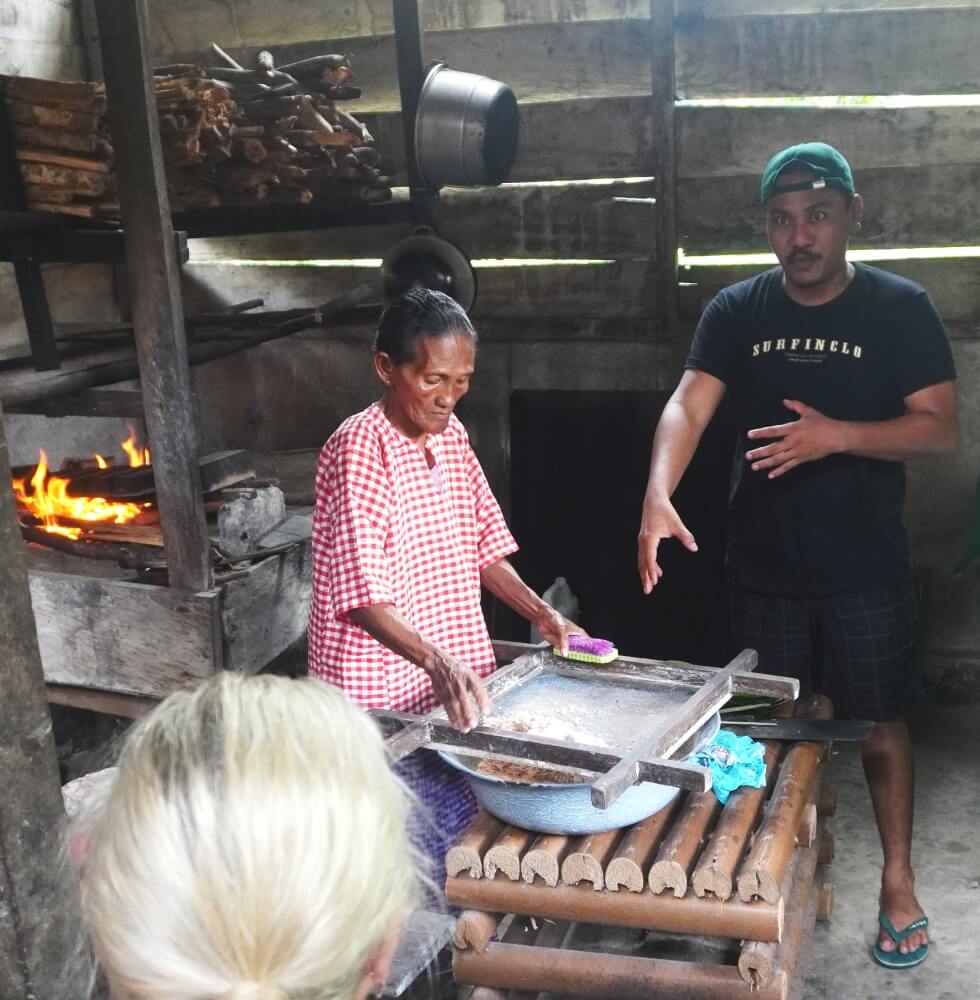
Close to the hearth, a low wooden table held a large bowl filled with creamy white sago flour that had been freshly screened to remove any clumps. Beside the larger bowl a smaller bowl held irregular chunks of dark brown palm sugar.
Sago starch and palm sugar come from different kinds of palms
Sago starch is extracted from the sago palm by splitting the stem lengthwise and removing the pith. The spongy mass is then crushed and kneaded before being washed and strained to separate the starch from the fibrous residue.
Palm sugar is produced by collecting sap from coconut or other palms, then boiling the sap until it thickens and is cooled into bricks or cakes.
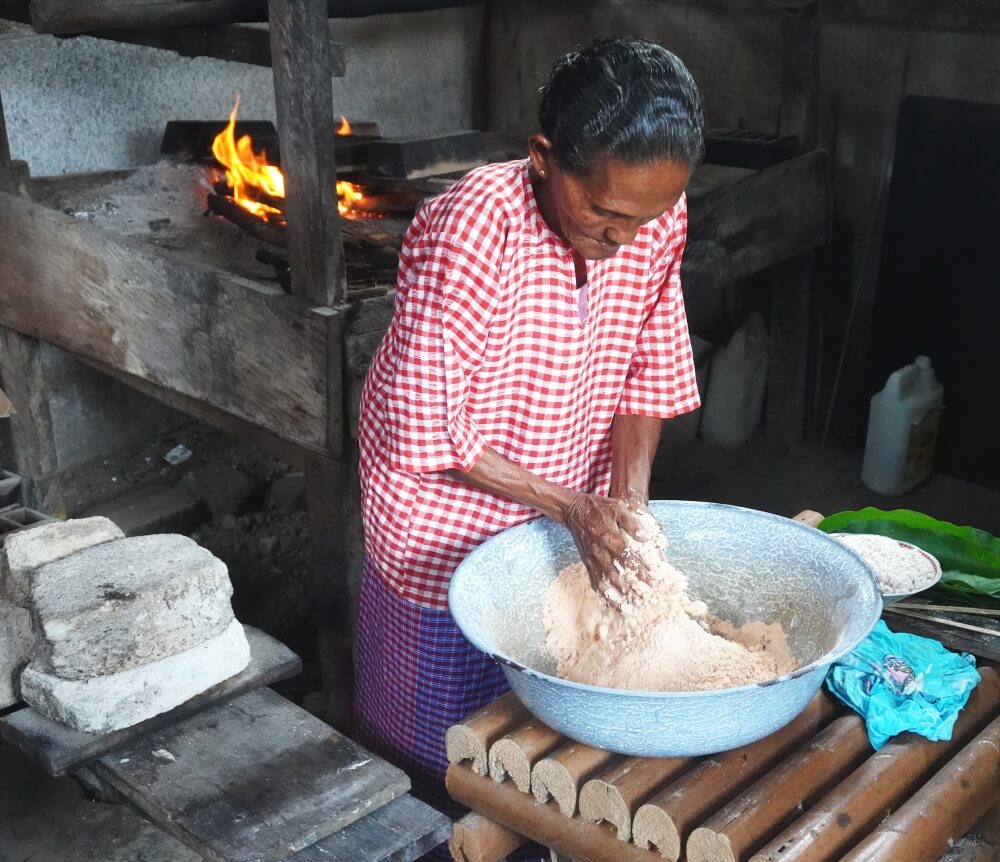
Grandma Nelly repeatedly stirred the sago flour with her hands, alternately squeezing and crumbling the powder to distribute its moisture evenly throughout the mixture.
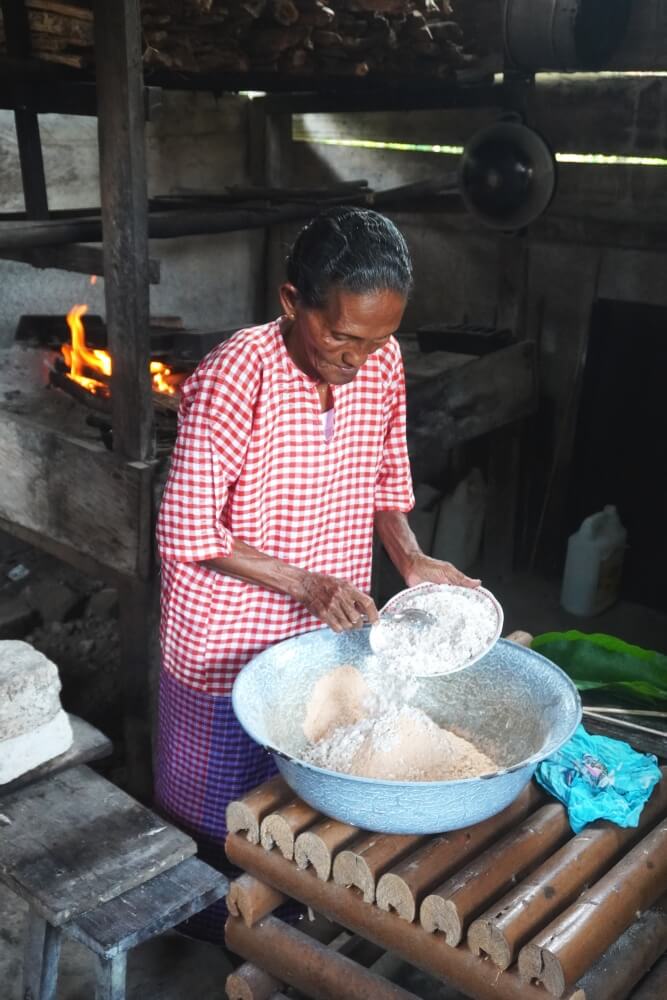
Adding freshly-grated coconut to the mix to add sweetness, she continued to knead the mass until it was just the right consistency.
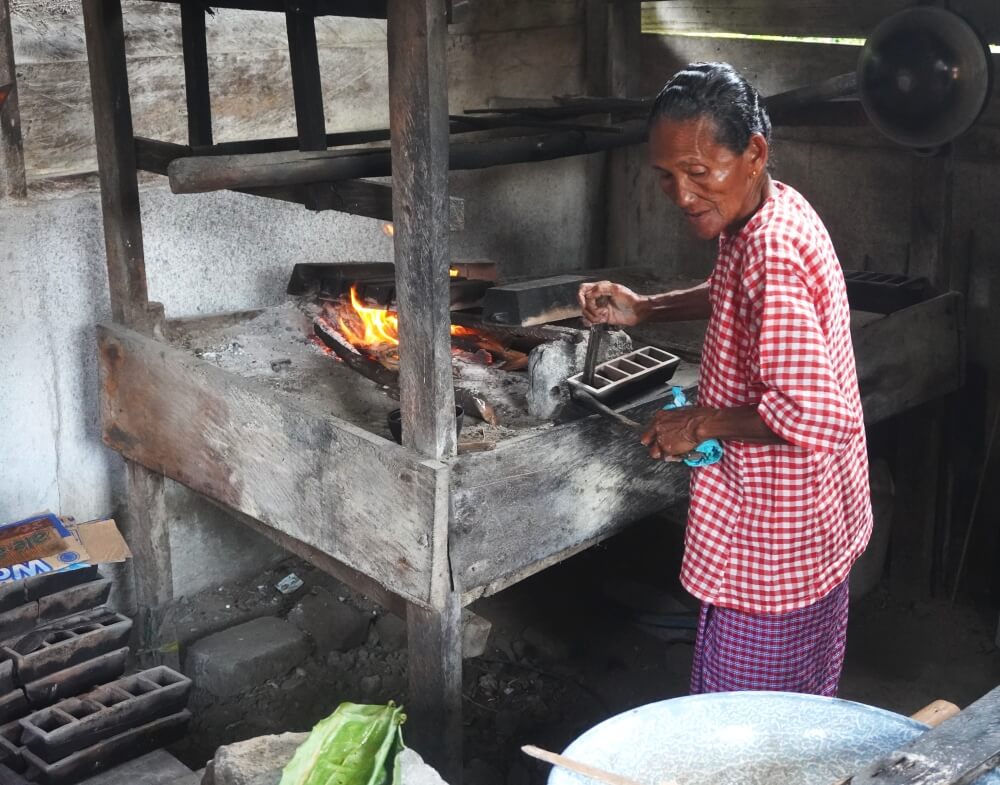
Lifting a hot mold from the fire, with only a thin piece of cloth for protection, Nelly placed it on a board laid across the top of the large bowl. She proceeded to sift the crumbly flour mix into each of the cells.
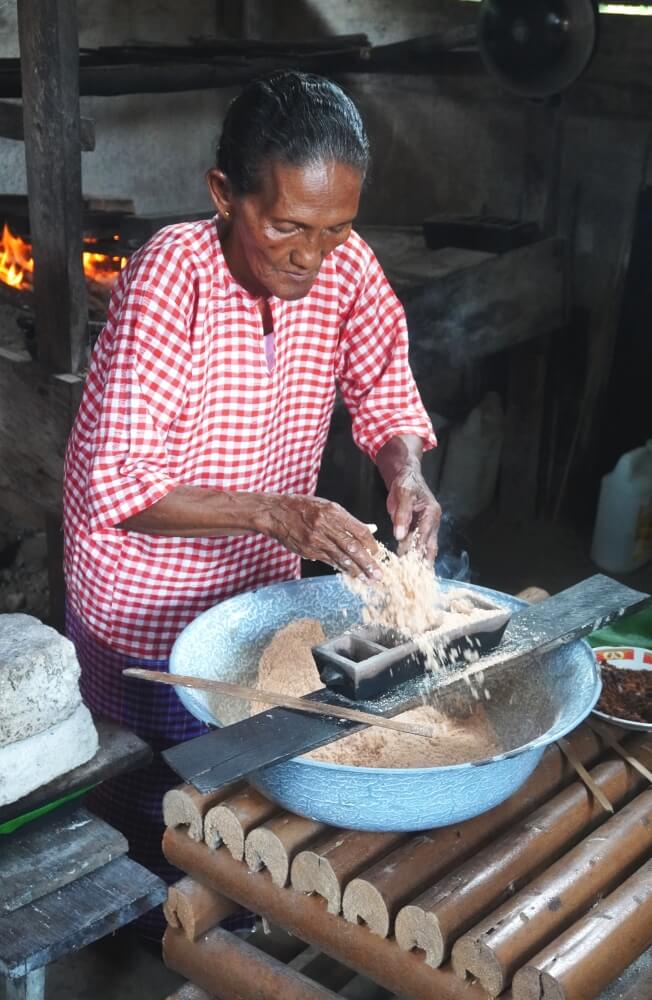
Oma Nelly’s years of experience were clearly on display
Half a century of experience was clearly on display as Nelly filled mold after mold with the sago flour mix. She neatly scooped out uniform indentations to fill with palm sugar as she deftly handled the hot ceramic molds.
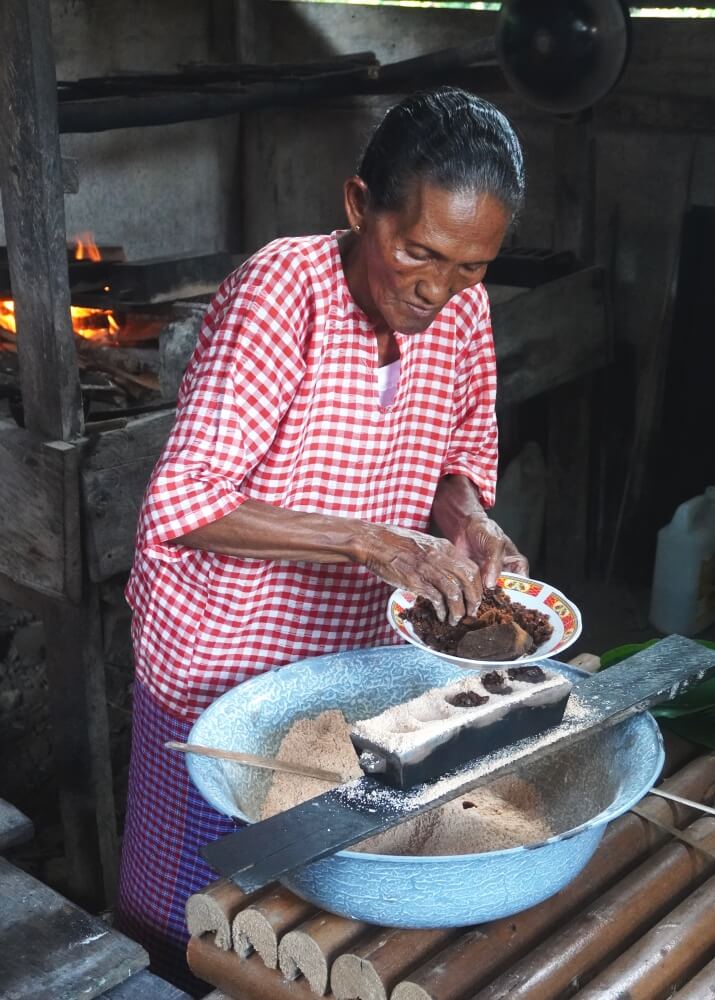
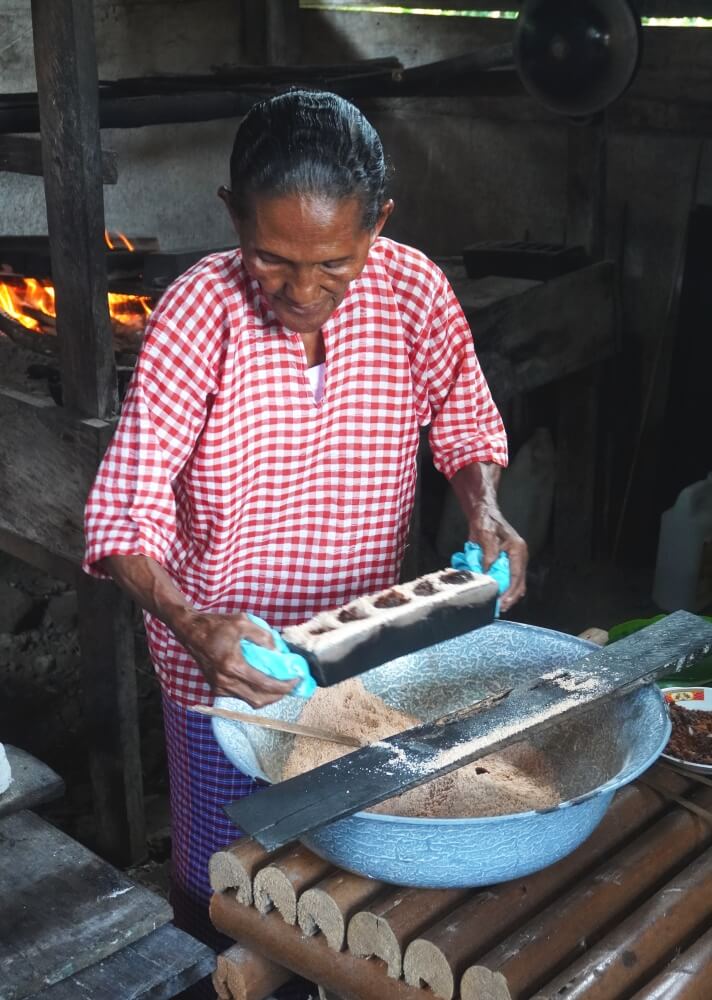
Each filled mold, still hot, was then set aside and covered with a fresh green palm leaf. It was then topped by a wooden plank and weighted down with a heavy rock to finish cooking.
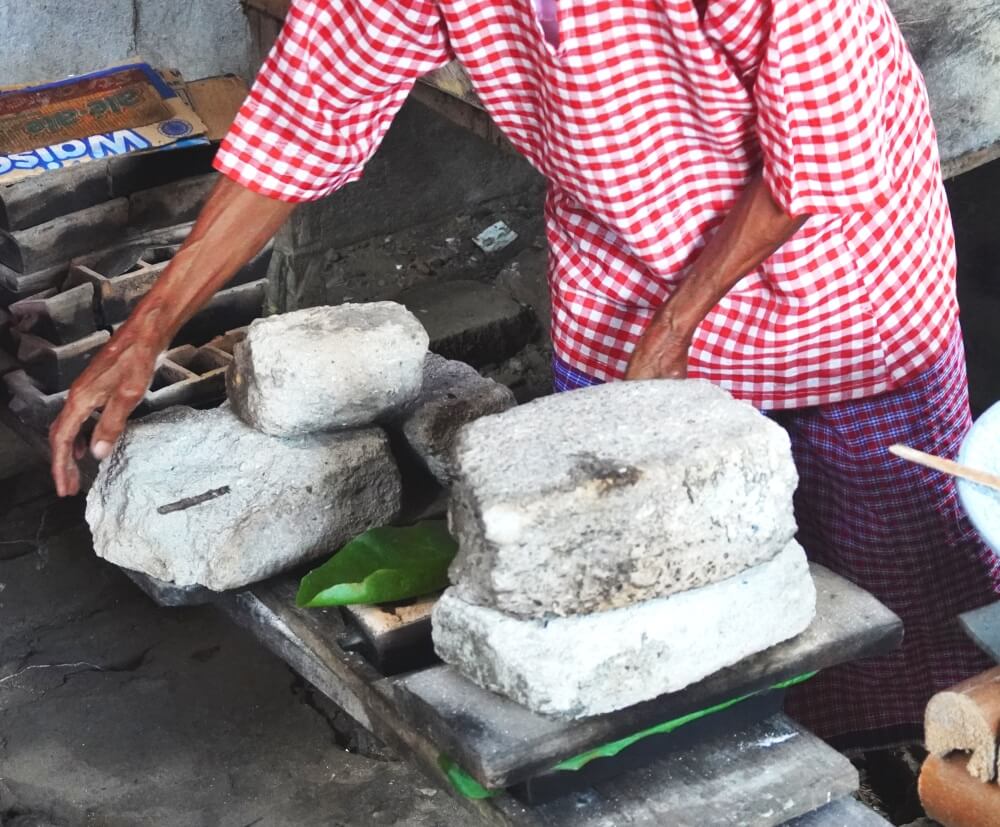
Grandma Nelly went right on to the next mold, repeating the process over and over.
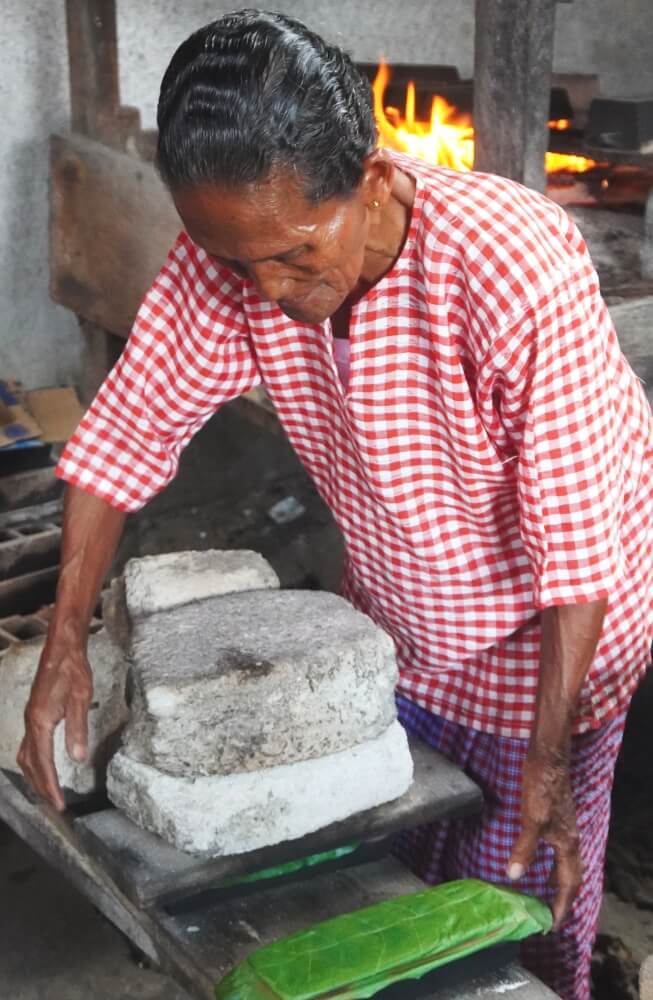
When the covered molds had sat for a sufficient length of time – roughly five minutes – she removed the rock, plank and palm leaf. Using a bamboo splint, she pried the finished sago cakes out of the mold, cutting them apart with scissors to serve up to our waiting palates.
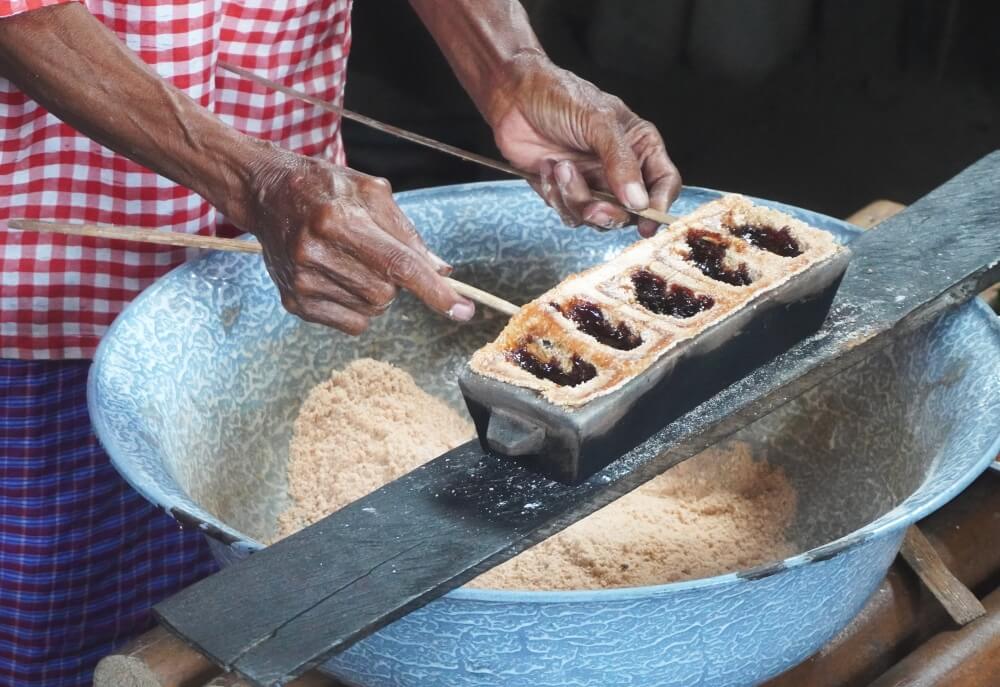
Right out of the hot mold, the finished cakes were delicious, slightly crunchy around the thin top edges. The main body was chewy with a somewhat nutty flavor.

The caramelized palm sugar filling coupled with the sweet coconut in the crust combined to make an almost mocha-like flavor. The only thing lacking with our sample was a cup of piping hot coffee.
